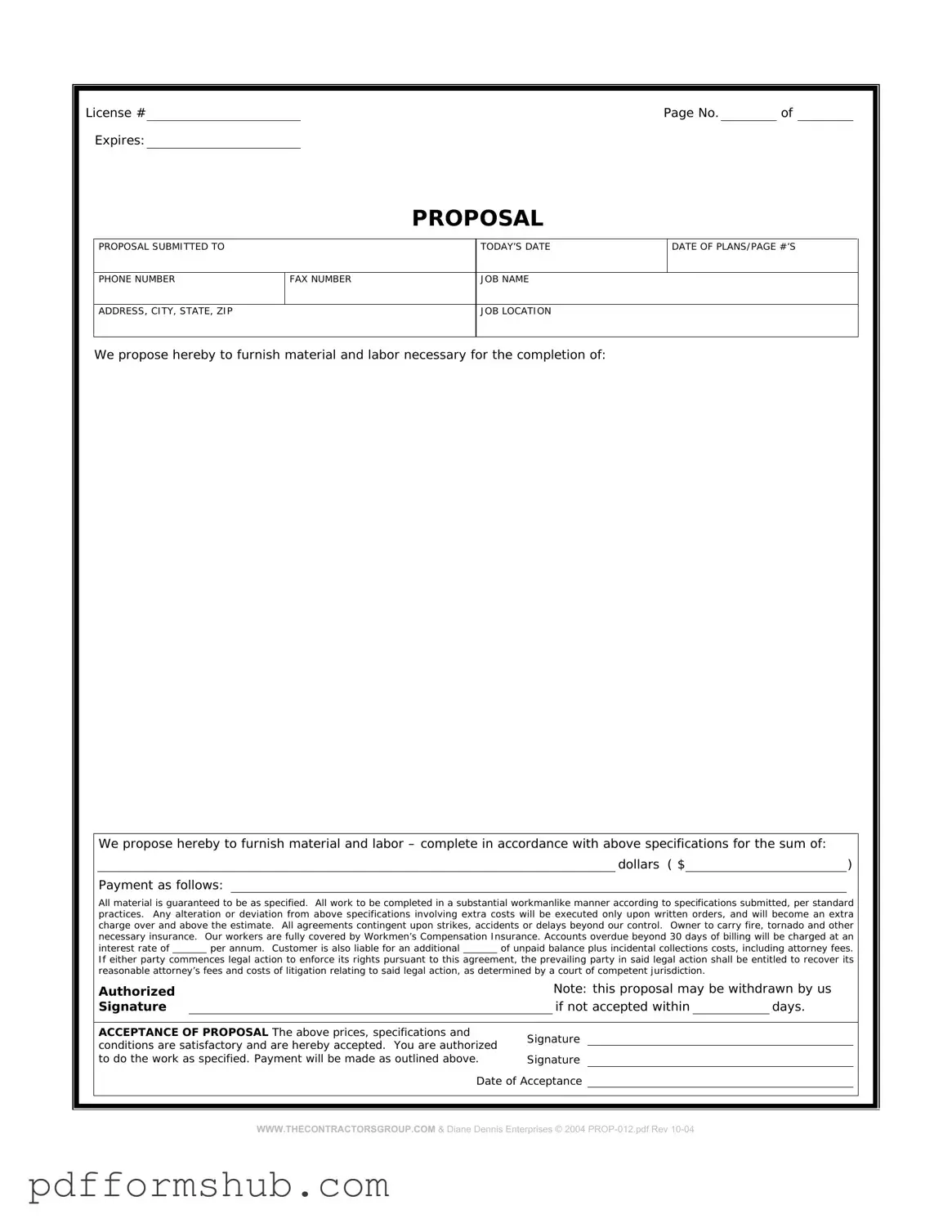Fill in Your Construction proposal form Form
The Construction Proposal Form is a vital document used in the building industry to outline the specifics of a project and present a detailed estimate of costs and timelines. This form serves as a foundation for negotiations between contractors and clients, ensuring that both parties have a clear understanding of expectations and obligations. To get started on your project, consider filling out the form by clicking the button below.
Customize Form
